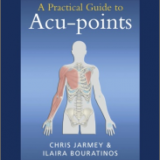Hypnosis – Part 3: Levels of Trance & Uses
Hypnosis is primarily intended to induce relaxation, and the basic requirement is the subject should be willing to be hypnotized and convinced that hypnosis will ensue. Be that as it may, this very process may occasionally establish a special kind of rapport between the subject and the therapist–sometimes with intense emotional overtones, that highly susceptible subjects could be made suggestible even without direct hypnotic suggestions, e.g., via telephone.
Hypnosis can be used in many forms–especially in psychotherapy. Primarily, it leaves the patient/person with more control over his/her actions. The procedure, in some cases, requires only a light trance–in the form of relaxation. The second use, which requires a deeper trance, is directed at fostering suggestibility to relieve symptoms–as in the case of schizophrenia. The third usage is hypnotic induction–to help recall repressed (often childhood) memories–made famous in popular films and TV serials. The therapist uses the hypnotic trance to implant direct suggestions–to enhance the recall of repressed memories, where the person may do something they did or experienced when younger. The format can give clues about the probable ages during which critical events may have occurred.
However this may be, hypnosis, on its own, cannot be used to treat all psychosomatic disorders. It has its limitations and advantages–like any other system of healing. In fact, most authorities do not recommend the use of hypnosis in clinical psychiatry. Some even suggest that hypnosis only removes the symptom–not cure the illness. However this may be, the role of hypnosis as a supportive form of therapy, in organic diseases, has been much valued and appreciated.
Most organic disorders surely require medication and other conventional treatments. Hypnosis may be useful, in a few disorders in the genre, because the anxiety factor, so common in the conditions, could be reduced, and the rate of recovery speeded up. This has been proved correct in cases of operative procedures where remarkable healing of the surgical wound is observed under hypnotic treatment. It may also be highlighted that even in cancer, in its terminal stages, the excruciating pain, so commonplace in the deadly disease, can be blocked by proper hypnotic suggestions. All the same, one needs to take extra care, in such cases, because the cancerous pain per se may mask the most important symptom/symptom-complex.
Hypnosis, on its own, can, however, cure most functional disorders. The important thing is the patient should be able to attain the proper level of trance to be receptive to treatment. A clarification: most mental disorders cannot be treated under hypnosis, because the patient cannot concentrate and/or follow suggestions.
It may also be mentioned that persons who can be easily hypnotized are the ones most likely to get the maximum benefit. One yardstick used for the purpose is the intelligence quotient (IQ); the greater the IQ, the better the possibility of a good response.
Hypnosis has also proved a successful method in the treatment of medical problems such as asthma, arthritis, eczema, psoriasis, warts, and vaginismus (A painful spasmodic contraction of the vagina which often makes intercourse impossible)–not to speak of obesity. Yet, skeptics of the traditional form of hypnosis contend that certain “newly-distilled” concepts of hypnosis and hypnotic trance are meaningless and misleading.
According to proponents of the alternative view, hypnotic behaviors are no different from the behaviors of subjects willing to think about, and imagine, themes suggested to them. If subjects’ attitudes towards the situation can lead them to expect certain effects, they contend, those will be more likely to occur. This kind of approach is called the cognitive-behavioral therapy.
Add short call to action paragraph segueing into introductory hypnosis program along with affiliate link.
If you want to learn how to become a highly skillful hypnotist check out Hypnosis Unwrapped. It demonstrates everything you need to use hypnosis successfully and safely – every piece of knowledge, every language pattern, every skill and technique.
Click Here for Hypnosis Unwrapped – Hypnosis Training DVD.






